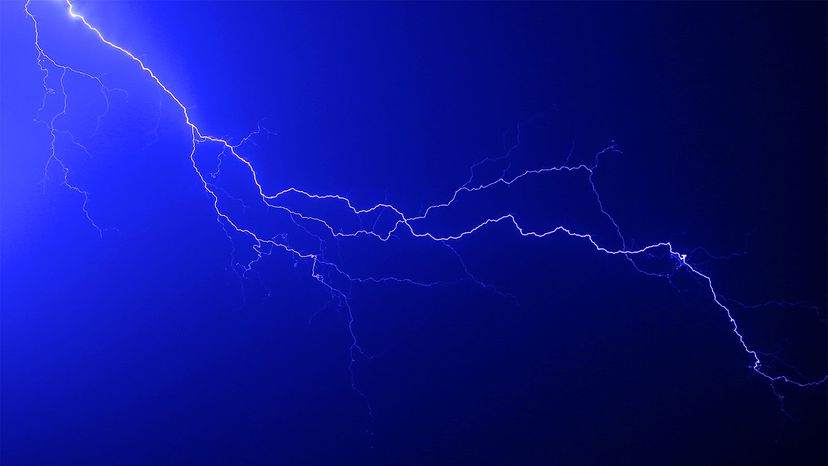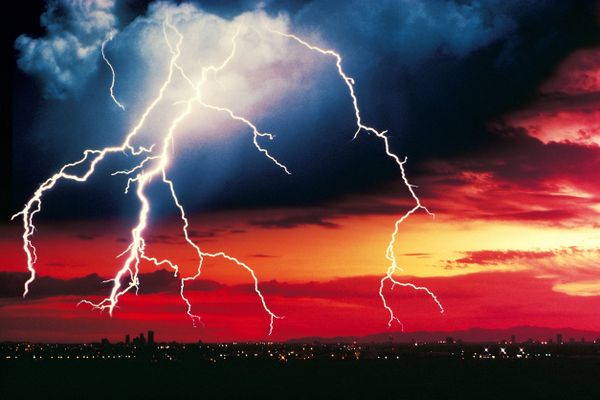Electrical Storms

Scientists have some pretty good guesses about what causes electrical storms, though they're learning more all the time. In the process of the water cycle, moisture accumulates in the atmosphere to form clouds. As the process of evaporation and condensation rolls along, condensing droplets collide with each other as they rise.
Storm clouds are made up of billions of dust borne water molecules and ice crystals that begin moving faster and faster as they rub together. As the water molecules collide, electrons are knocked off, creating a charge separation. The newly knocked-off electrons fall to the lower portion of the cloud, giving it a negative charge. As a result, clouds become charged like giant batteries in the sky — the upper portion of the cloud becomes more positively charged and the lower portion more negatively charged.
Advertisement
Because positively and negatively charged objects attract each other while objects with the same charge repel each other — think magnets! — the negative end of the cloud that's closer to the ground pushes away the negatively charged molecules on the ground.This repulsion of electrons causes Earth's surface to acquire a strong positive charge.
All that is needed now is a conductive path for the negative cloud bottom to contact the positive earth surface. The strong electric field, being somewhat self-sufficient, creates this path.
We'll look at the next stage of the lightning creation process, air ionization, next.
